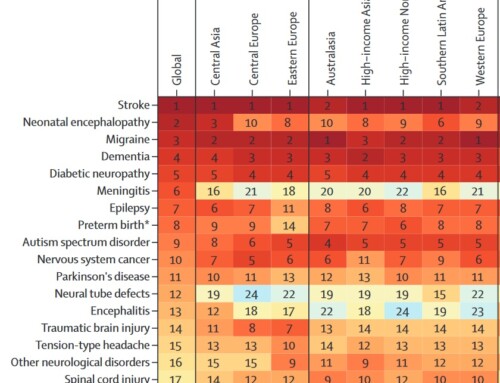There will be new approvals for metoclopramide drops again from August 2015. They will be available again in pharmacies at 1 mg/ml with a different indication and duration of therapy. The MCP solution 1 mg/ml is approved in adults for the treatment of nausea and vomiting (as a so-called antiemetic) associated with chemotherapy, as well as for the prevention of these symptoms caused by radiation therapy or acute migraines.
In contrast to before, the active ingredient concentration is now only a quarter. Therefore, dosing is no longer done using a dropper, but rather with a graduated pipette. It contains 5 ml, for the recommended single dose for adults, so for 10 mg you need to take two full pipettes. The preparations should be reimbursable.
Five further approval applications for MCP in a concentration of 1 mg/ml and the dosage form “oral solution” are pending at the Federal Institute for Drugs and Medical Devices (BfArM).
Background: Many migraine patients were able to use MCP to effectively and tolerably treat nausea and vomiting and also improve gastric motility. However, in April 2014, the approvals for all finished medicinal products containing metoclopramide in drop form with a concentration higher than 1 mg/ml were revoked. The preparations were withdrawn from the market. All indications for chronic complaints no longer apply as a result of the revocation of the approval. For many migraine sufferers this came as a surprise and other options were often not effective or tolerated.
Antiemetics normalize gastrointestinal motility and relieve nausea and vomiting. Metoclopramide (MCP) was recommended in a standard adult dose of 20 drops. Fatigue, dizziness or diarrhea are rare undesirable effects. Very rarely, movement disorders in the form of involuntary mouth movements, throat and tongue spasms, head turning, difficulty swallowing or turning of the eyes can occur shortly after ingestion.
Metoclopramide drops (MCP) with an active ingredient content of more than 1 mg/ml were no longer marketable. You have been called back. The preparations available in Germany all contained concentrations between 4 and 5 mg/ml. They were all affected by this.
The reassessment is based on the known risk of significant cardiovascular and neurological side effects, particularly extrapyramidal symptoms and irreversible tardive dyskinesia. This risk increases with the dose used and duration of treatment.
The newly approved metoclopramide drops from August 2015 now have a weaker concentration of 1 mg/ml. The maximum dosage for adults is now 30 mg or 0.5 mg/kg body weight per day. For children, dosage is based on body weight. 0.1 to 0.15 mg/kg body weight up to three times daily is recommended. The maximum dose within 24 hours in children is also 0.5 mg/kg body weight. The duration of therapy was limited to a maximum of five days. All indications for chronic symptoms have been eliminated as a result of the revocation of the approvals.
Loss of appetite, nausea and vomiting can be symptoms of migraine attacks. In addition, the muscles of the stomach are often impaired in their locomotion function. So-called antiemetics (Latin: emesis = vomiting) are intended to correct these functional disorders in migraines. The reduced gastric motility during migraines also means that the usual migraine medications taken as tablets are difficult to transport further into the intestine. The desired effect will then not be achieved. For this reason, so-called antiemetics are recommended to treat migraine attacks. This is intended to normalize the control of stomach motility again and improve the effectiveness of the migraine medication.
Domperidone and dimenhydrinate are still available as alternatives for the treatment of nausea and vomiting during migraine attacks.
Domperidone has antiemetic and prokinetic effects. Domperidone has fewer extrapyramidal motor side effects than metoclopramide. Taken in the prodromal phase of migraine, domperidone reduced the likelihood of a subsequent headache phase of migraine in two studies. Domperidone is available as a tablet and suspension. The assessment of the prokinetic drug domperidone (e.g. Motilium) has also been revised. The indications were limited to the symptomatic treatment of nausea and vomiting. Adults weighing more than 35 kg should only use domperidone in a maximum dosage of 10 mg orally up to three times a day or up to 30 mg rectally twice a day. Children and adolescents weighing less than 35 kg should only receive domperidone orally at a maximum dose of 0.25 mg per kg body weight up to three times daily. Domperidone should not be used for longer than a week. The reason is cardiac side effects of domperidone. Cardiac arrhythmias, such as life-threatening QT prolongations, have long been known as undesirable effects; Domperidone should therefore only be used with caution in patients with heart disease or electrolyte disorders.
Dimenhydrinate is antiemetic but not prokinetic. Dimenhydrinate is therefore only the drug of second choice in the treatment of migraine attacks, unless the sedative side effect is desired. Dimenhydrinate is available as a dragee, syrup, chewable tablet, suppository and for IV and IM injection.









I suffer from positional vertigo, so I have to do so-called positioning maneuvers to get rid of it! With every exercise I vomited my heart out. The only thing that helped me was Paspertin, without which no exercise was possible
The remedy has always (!) helped me wonderfully. Never had any side effects. Unfortunately, since it is no longer as effective as it used to be, I just take 4 to 5 times the amount. Now it works again. It's all ok. Unfortunately it is more expensive. Has anyone ever thought about why the industry allows the approval of an important drug to expire? The end didn't come as a surprise
It's good that an indispensable medication is available again. Unfortunately, the new pack sizes only allow a three-day treatment for adults. In the case of a manifest gastrointestinal virus, this is not really practical.
MCP was and is always the first choice. Anyone who is not plagued by migraine attacks or has to deal with the consequences of chemotherapy cannot appreciate how important this medication is, regardless of whether it is in high or low doses! You simply have to take more to get the old effect that the patient is looking for.
I was so relieved when I heard that the drops had been taken off the market.
In 2012 I took 7 drops twice a day for several days because of stomach pain. What happened to me then was much, much worse than the stomach pain. I had extreme movement disorders. It was as if a force was pulling me down and I was lying on the floor. When I wanted to get into the car, I was “pulled” down next to the car door. For three weeks I only went to work by train. When I sat in the chair, I was "pulled" to the side, as if I were sitting on the plane during takeoff. My colleagues were shocked. I didn't feel dizzy, it wasn't like having low blood pressure. Every day that I took these drops I had such “attacks”. It was so terrible. I would never take MCP drops again. I don't know what the current change is like, but I only took 7 drops and had these extreme side effects. Ingrid Brieden
Many doctors say MCP makes you psychotic. What nonsense!!!
If you take MCP and already have psychosis, that's understandable!
MCP is a very good medication!!!
What Sarina writes here is nonsense because logically you always have to assume that you will get side effects from an overdose and that has nothing to do with the concentration of the active ingredient!
Anyone who can read the package leaflet here has a clear advantage. In my opinion, taking these drops off the market was the worst decision that could have been made because it was the only medication that really did what it promised and for me without any side effects!
NOTE: I TOOK THE MEDICINE MYSELF UNTIL IT WAS RECALLED, almost 5 years.
I've been taking it again since it came back on the market.
In the meantime, however, I didn't have to go without, but instead stockpiled supplies in good time and ended up with tablets (10 mg) from a friend. He told me that the tablets were still available as usual, only the drops were affected. Before I could question this with my family doctor, the drops were approved again and the problem was solved (1mg/ml instead of 4mg/ml) MFG DASK
I once accidentally overdosed on the MCP drops and, based on this very frightening and unpleasant experience, I can only say that the active ingredient concentration should have been adjusted earlier.
Both the pharmaceutical companies and the regulatory authorities “play” quite lightly with the suffering of seriously ill patients. Because only they were extremely affected by the lockdown. Someone who occasionally took MCP for bloating certainly didn't miss the drug. For the others there were dramatic consequences!!!! How presumptuously everyone makes decisions, and those who are sometimes really tragically affected are left defenseless in the “battle”! There needs to be commissions for something like this in which those affected sit in order to weigh up whether, for example, such an important remedy should only be restricted to family doctor treatment.
Finally!!!!!!